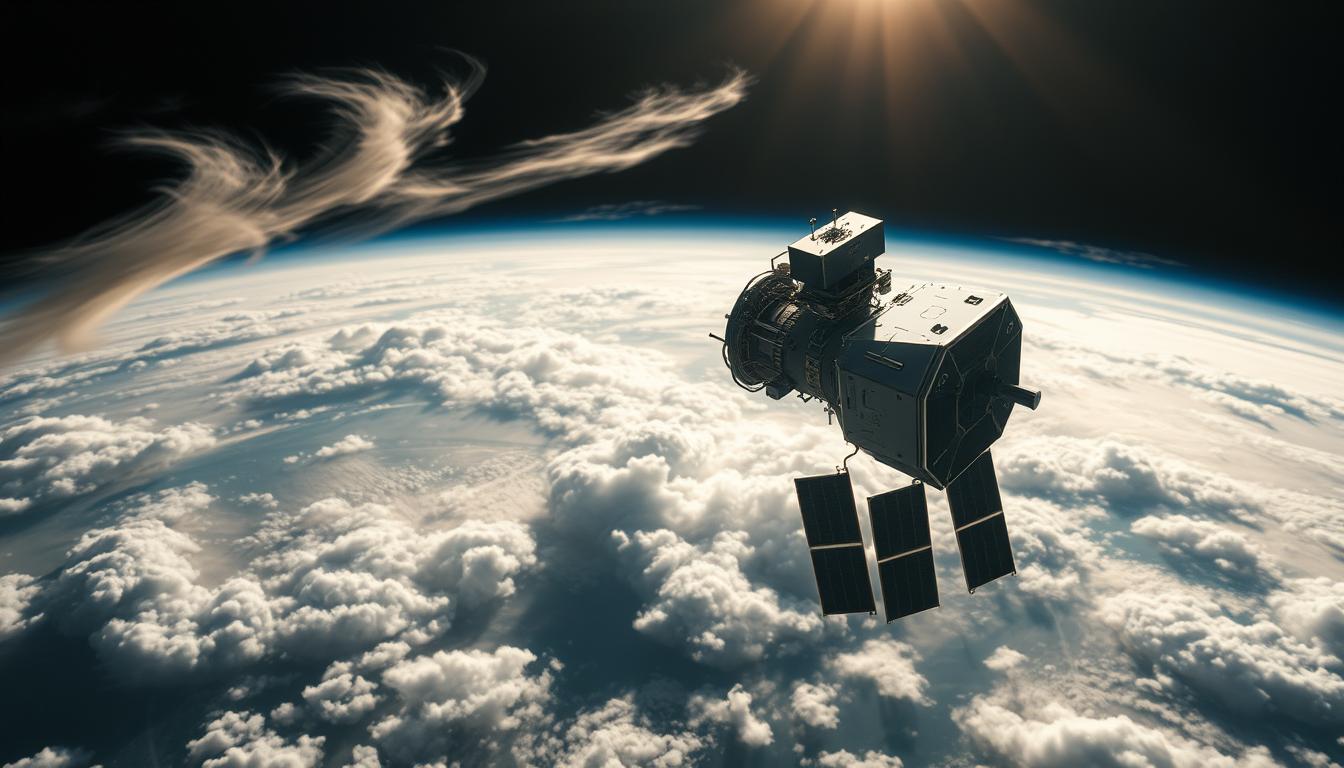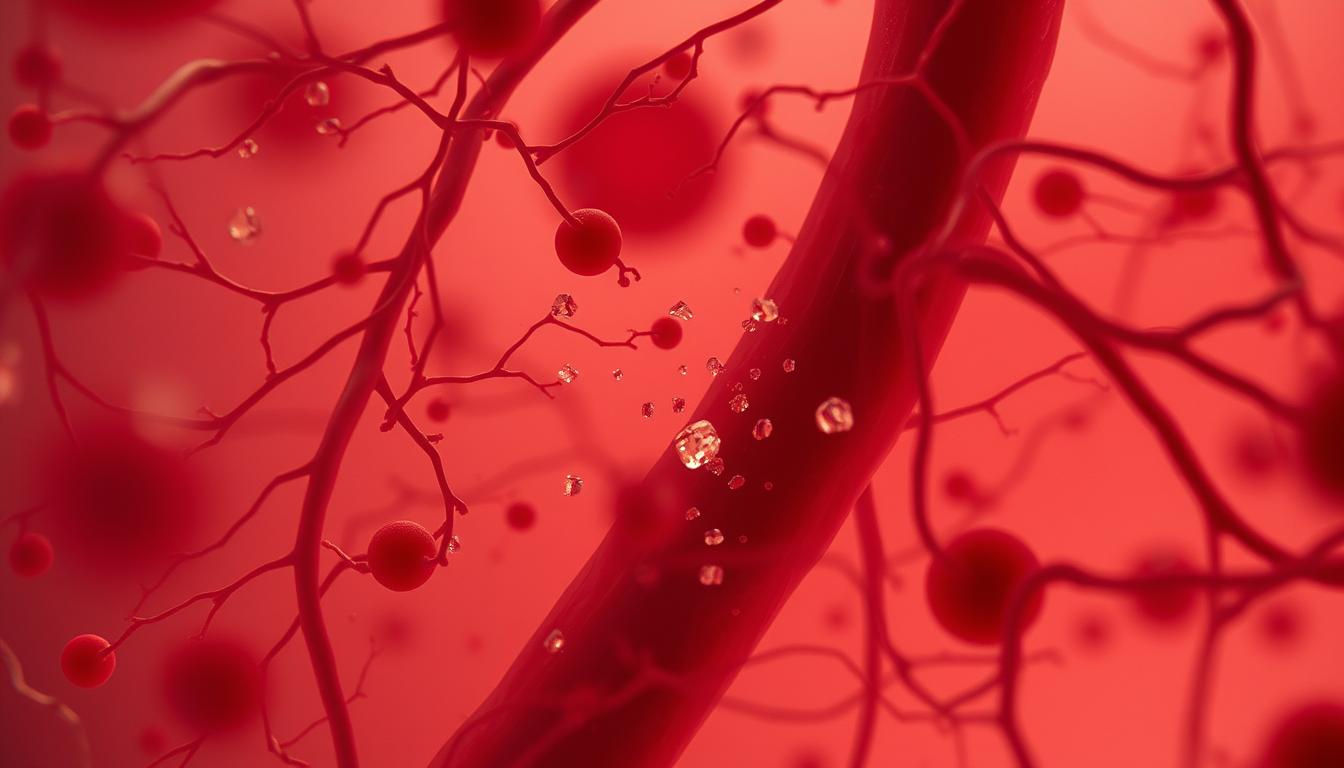Methane Hunters Satellites Exposing the Invisible Climate Villain

Did you know that methane is over 80 times better at trapping heat than CO2 over 20 years? This fact shows why we must act globally against this hidden climate enemy. With new tech, we’re now better at fighting methane emissions than ever.
The work of Methane Hunters and their satellites helps us find where these emissions come from. This allows us to call out the polluters and work on real solutions for climate change. By using satellites to track methane, we uncover threats we couldn’t see before. This helps us understand our planet’s health better.
Key Takeaways
- Methane is a potent greenhouse gas, amplifying climate change effects significantly.
- Satellite technology plays a crucial role in tracking methane emissions globally.
- Understanding methane sources is essential for effective climate change solutions.
- Corporate accountability is vital in managing methane emissions.
- New advancements pave the way for improved satellite methane monitoring.
The Rise of Methane as a Climate Threat
Methane is now a big climate threat, known for its strong greenhouse effect. It traps heat in the air way better than carbon dioxide. In fact, methane’s heat-trapping ability is about 28 times more over 100 years. Since before the industrial age, methane levels have more than doubled. This rise adds to the urgency of the climate crisis we face today.
Methane emissions mainly come from farming and getting fossil fuels. New tech helps us understand and monitor these emissions better. This allows us to see methane emissions as they happen. This is key in tackling the big issues methane brings.
It’s vital we understand how methane affects the climate. Quick action on methane emissions can lessen some effects of climate change we see now. Putting methane at the top of our climate action list is important. It’s a big step towards a sustainable future for us all.
Understanding Methane Emissions
Methane emissions are a big hurdle in fighting climate change. They mostly come from farms, oil and gas drilling, dumps, and coal mines. Farming tops the list because of methane from cows’ digestion and from handling waste. This leads to a lot of methane, a very harmful greenhouse gas.
Fossil fuels like natural gas and oil also release methane. Spotting these leaks is key in cutting down emissions. This is especially true in places where leaks and burning off gas are common. Getting a good grasp of methane emissions is vital. It helps us make better plans to lower these emissions and hold different sectors accountable.
What Are Methane Hunters?
Methane hunters are advanced satellite missions tracking methane emissions precisely. They use high-tech methods to monitor methane worldwide. By checking methane in the atmosphere, they find emission hotspots and patterns that affect our planet.
These tools provide essential data to hold industries responsible for their emissions. This encourages openness and better methods. The gathered info helps in making policies and decisions to cut methane emissions in various areas.
The Role of Satellites in Climate Monitoring
Satellites are key in tracking climate change. They show us real-time data on atmospheric gases and pollutants. This helps us see climate change more clearly. Environmental satellite data gives us detailed info on things like methane emissions.
Tools like MethaneSAT are changing how we approach climate tech innovations. They let us track emissions, see trends, and understand their effects. This leads to climate action transparency in different areas, based on accurate measurements.
These technologies offer a comprehensive view of our planet’s atmosphere changes. They are crucial for researchers and policymakers. This helps them tackle climate change in an organized manner.
Methane Emissions, Satellite Methane Tracking, Invisible Climate Villain
Methane emissions are central to the climate change story. Tracking these emissions with satellites is crucial for spotting this hidden climate threat. Knowing more helps us take action to lessen methane’s harm to our world.
Linking Methane to Climate Change
Human activities, especially from oil and gas, are making atmospheric methane levels rise fast. Methane warms the planet much more than carbon dioxide over a short period. Studies warn that without quick action, these emissions could spike temperatures and harm our climate even more.
Health Impacts of Methane Emissions
Besides affecting the climate, methane emissions are bad for our health. They worsen air quality, raising the risk of lung problems and other health issues. Fighting oil and gas pollution helps the environment and our health, showing the need for action that covers both areas.
How MethaneSAT Works
MethaneSAT is a big leap forward in tracking methane emissions worldwide. It uses advanced methanesat technology with infrared spectrometry. This analyzes sunlight bouncing off methane molecules. We can spot methane with amazing accuracy because of this. It lets us find the biggest methane leaks and their sources.
This satellite maps emissions as they happen, giving valuable information. It shows where methane levels are high. This helps us understand more about where and how methane is released. With this info, we can make plans to lessen methane in the air.
MethaneSAT doesn’t just find leaks. It also makes companies more responsible. By showing where the methane comes from, we can help start efforts to lower emissions. This is a step towards a cleaner, sustainable world.

The Importance of Infrared Sensors for Methane Detection
Infrared sensors play a key role in today’s satellite tech. They help us track and measure methane emissions very accurately. By using these sensors, we can spot methane even in tiny amounts.
Technology Behind Satellite Methane Tracking
This technology helps us better understand methane emissions. Satellites with infrared sensors can find methane levels as low as three parts per billion. This sensitivity lets us track methane from farms, landfills, or gas production accurately.
We can keep an eye on greenhouse gas emissions and decide on climate actions. This technology is key for taking care of our planet.
Measuring Methane Concentrations Accurately
Measuring methane right is vital to fight climate change. These sensors know the difference between gases, helping us find where methane comes from. Knowing these details helps form plans to cut down emissions.
This way, we keep our promise to monitor greenhouse gases. It also helps the world work together to lessen climate change effects.
Mapping Methane Super-Emitters
We need precise methods to find the biggest sources of methane pollution. Our goal is to identify the super-emitters harming our atmosphere the most. With satellites and advanced sensors, we cover large areas to detect methane from many places. This includes big industrial sites and smaller, unnoticed sources.
Oil and gas industries are major contributors to global warming. Their emissions, often escaping unnoticed during extraction, processing, and transport, are worrisome. With satellites, we can locate these emissions precisely. This lets us address the worst leaks directly.
Our mapping guides regulators and stakeholders in reducing emissions effectively. Being open about our findings holds companies accountable. It pushes them to fix their part in methane pollution.
Global Methane Pledge and Its Implications
The global methane pledge is a key move in fighting climate change together. It aims to cut methane emissions by a third by 2030. This shows how urgent it is for countries to act on climate promises. By doing this, we get better at finding and handling methane sources, a major greenhouse gas.
This pledge makes us take greenhouse gas emissions more seriously. Setting clear goals helps countries and groups work together better. With tools like satellite tracking, we can watch methane emissions closely. This makes sure countries stick to their promises and keeps things open.
This effort isn’t just about the environment. It also shows how important it is to get everyone involved. By uniting different people, our combined efforts for the climate grow stronger. The global methane pledge pushes us all towards a greener tomorrow.

Corporate Accountability in Methane Emissions
Corporate responsibility is key in tackling methane emissions. Companies now face more scrutiny and need reliable reporting systems. Traditional methods often miss the mark. But, satellite tech offers real, unbiased data. This improves how businesses report their carbon emissions. It helps them show they truly care about our planet.
Knowing how much gas they emit is crucial for companies. Satellite data gives a clear picture, helping follow rules. Companies checked by outsiders should use this better tracking. It leads to a responsible culture. This encourages everyone to take action for our climate.
The Future of Climate Tech Innovations
Climate tech innovations are changing fast because fighting climate change is urgent. Mixing remote sensing with new tech changes how we watch the environment. This lets us collect important data on emissions, helping communities make smart choices and push for change.
Integrating Remote Sensing Environmentalism
Future environmental monitoring will improve by combining satellite tech with community efforts. Using satellite data helps make industries more open and accountable. This could lead to a greener future. Also, when people can see environmental data, they can fight for cleaner practices.
Real-time data platforms on emissions and environmental health are key. They raise awareness and prompt group action. Companies are then pushed to be more environmentally friendly. As time goes on, merging climate tech and remote sensing will be vital in tackling climate issues, forming a key part of our green strategy.
Conclusion
Reducing methane emissions is crucial for real climate action and preserving our environment. Technologies like MethaneSAT can change the game. They help find and lower emissions, helping us meet our climate targets. With satellite tracking, we can make companies more responsible, cutting down on harmful methane leaks.
The fight against climate change is urgent, especially with methane. It’s up to us all to protect our planet. By focusing on cutting methane emissions, we’re pushing the movement for a healthier planet forward. This effort is key for our future and the planet’s wellbeing.
FAQ
What are methane emissions, and why are they a concern?
Methane is a powerful greenhouse gas that contributes to climate change. It traps 28 times more heat in the atmosphere than carbon dioxide. Methane levels have doubled since the pre-industrial era. This makes reducing methane key in fighting global warming.
How do satellite technologies assist in tracking methane emissions?
Satellites use advanced infrared sensors to watch methane in our atmosphere. Through missions like MethaneSAT, they pinpoint where methane comes from. They map out methane “hotspots,” helping us understand and control its release.
What are the main sources of methane emissions?
Methane mainly comes from farms, landfills, and fossil fuels. Cows and other livestock produce most agricultural methane. Oil and gas extraction, plus coal mining, also release a lot of methane.
What is the Global Methane Pledge?
The Global Methane Pledge aims to cut methane emissions by 30% by 2030. It’s a promise between countries to work together. The goal is to better monitor and reduce methane emissions worldwide.
How does infrared sensor technology work in methane detection?
Infrared sensors on satellites can detect methane’s unique wavelengths. This lets them measure methane levels really accurately. They can spot as little as three parts per billion of methane, helping keep an eye on its spread.
What impact does methane have on public health?
Methane worsens air quality, which can lead to breathing problems. Reducing methane emissions isn’t just good for the climate. It also helps keep us healthier by ensuring cleaner air.
What are methane super-emitters?
Some sources release a lot more methane than others; we call these super-emitters. Spotting these through satellites lets us focus on reducing their massive emissions.
How can corporate accountability improve methane reduction?
Satellites offer clear, unbiased data, making companies more responsible. This helps ensure they meet methane reduction goals, increasing industry accountability.
What future trends are anticipated in climate tech related to methane?
Climate tech will likely mix satellite tracking with grassroots efforts. This will give everyone better access to data. It empowers people to push for change and companies to act responsibly towards the environment.











